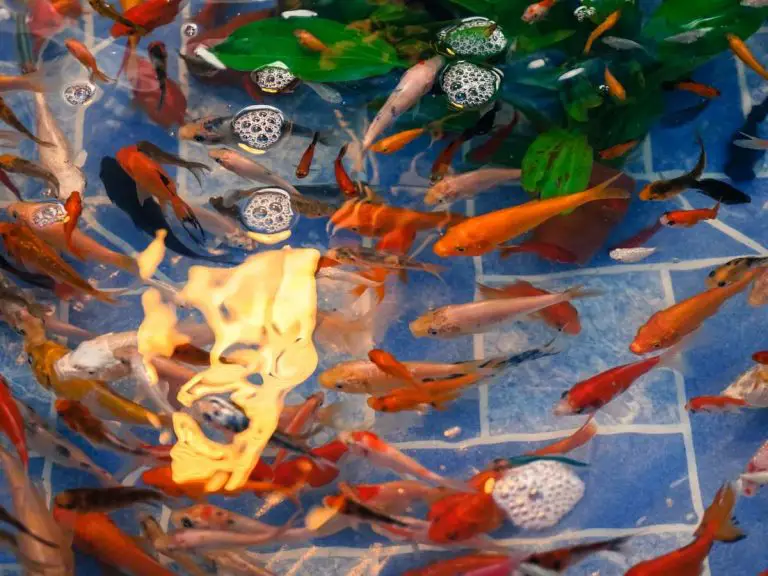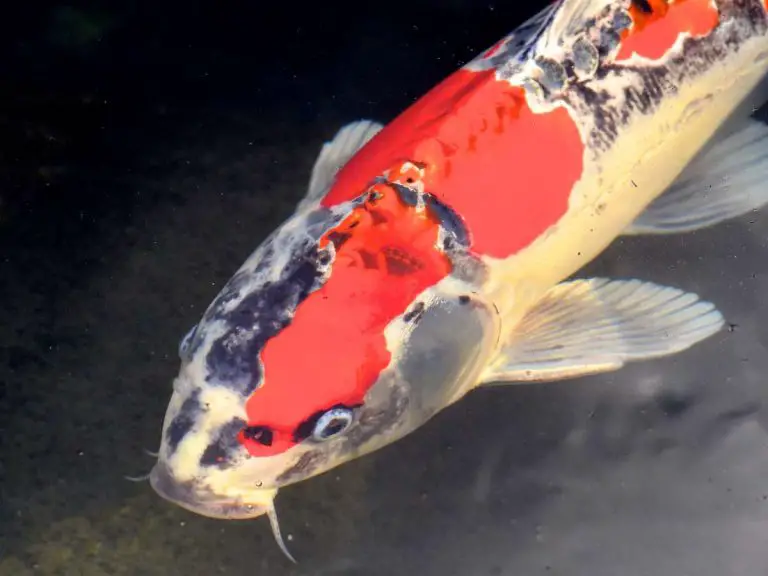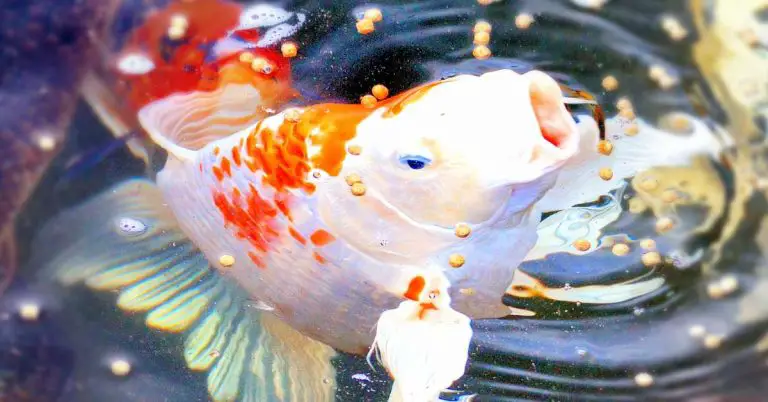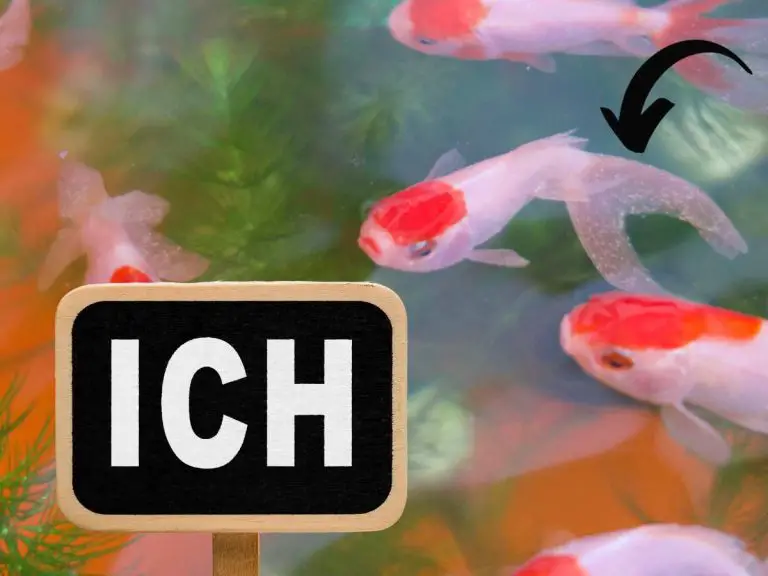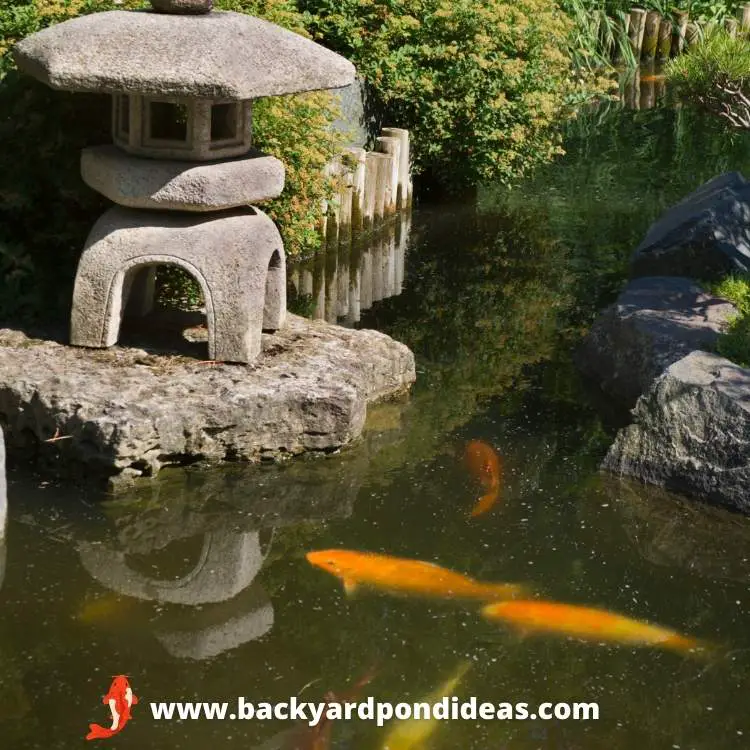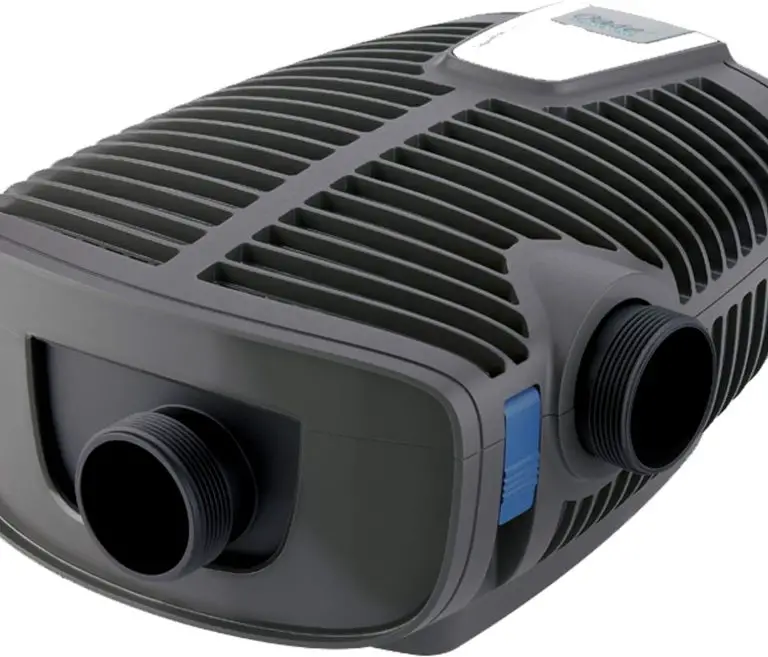Goromo Koi Guide: The Art & Science of Caring for Goromo Koi Fish
Beautiful goromo koi fish fish have captivated the hearts of pond enthusiasts all over the world. Whether you’re a seasoned koi keeper or a curious beginner, this goromo koi guide is here to provide you with all the information you need to care for these stunning creatures.
Goromo koi are a type of ornamental fish known for their distinct patterning. They feature a base color of white or cream, with patches of red or orange known as “hi,” and black outlining the patches called “sumi.” These unique markings give goromo koi a truly striking appearance in any pond or tank.
But that’s just the beginning! In this guide, we’ll explore the origins of goromo koi, the different types you might come across, and their specific care requirements. We’ll all cover topics like water parameters, pond or tank setup, feeding tips, behavior and attributes, health issues and disease prevention, breeding techniques, and even how to select and purchase the best goromo koi specimens.
So let’s dive in (pun intended!) to goromo koi!
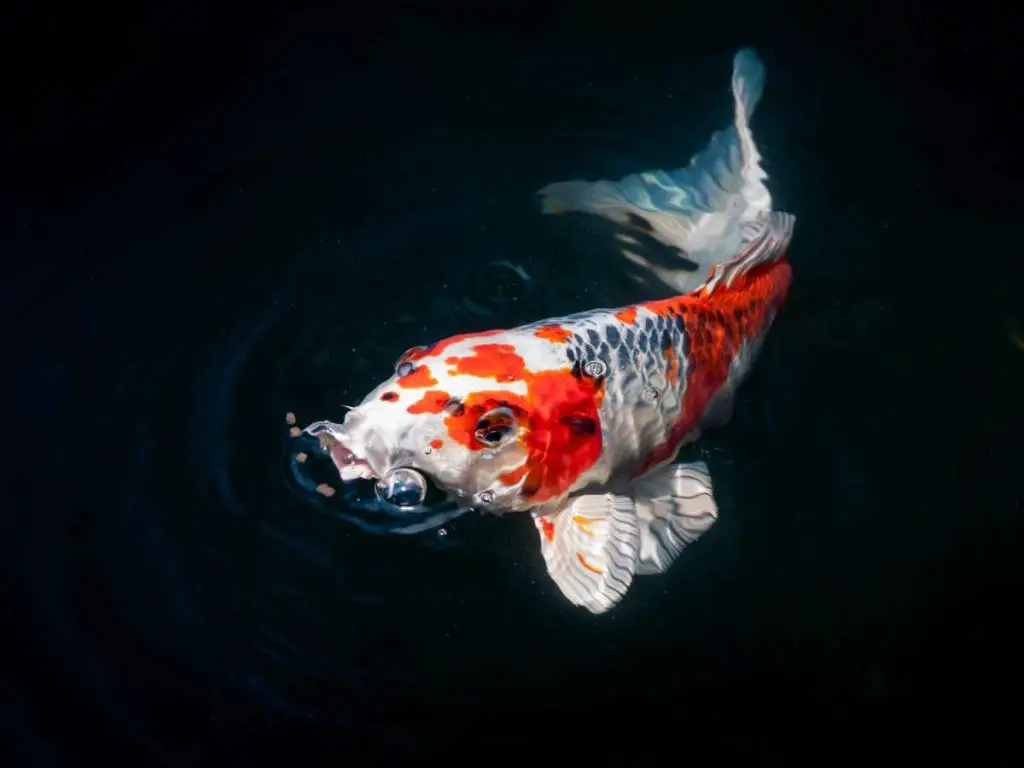
Overview of goromo koi
The Goromo Koi, often referred to as the “robed” koi due to its intricate patterns, has its roots in Japan. It is believed to have emerged in the early 20th century as a mutation between the Asagi and Kohaku koi. The name “Goromo” translates to “robed,” aptly describing the fish’s unique pattern that appears as if it’s wearing a delicate robe.
Over the years, breeders have refined and developed the Goromo’s patterns, leading to the various subtypes we recognize today. These patterns typically consist of deep red, black, or indigo markings on a white or light-colored background.
Physical Characteristics of Goromo Koi
Goromo Koi are renowned for their distinctive reticulated patterns, which overlay a solid white base. This net-like pattern, primarily blue or black, is what sets them apart from other koi varieties. In terms of size, Goromo Koi can grow up to 30 inches in length in optimal conditions, though the average size is around 20-24 inches. They possess a streamlined body shape typical of koi, with broad, flowing fins that add to their graceful appearance.
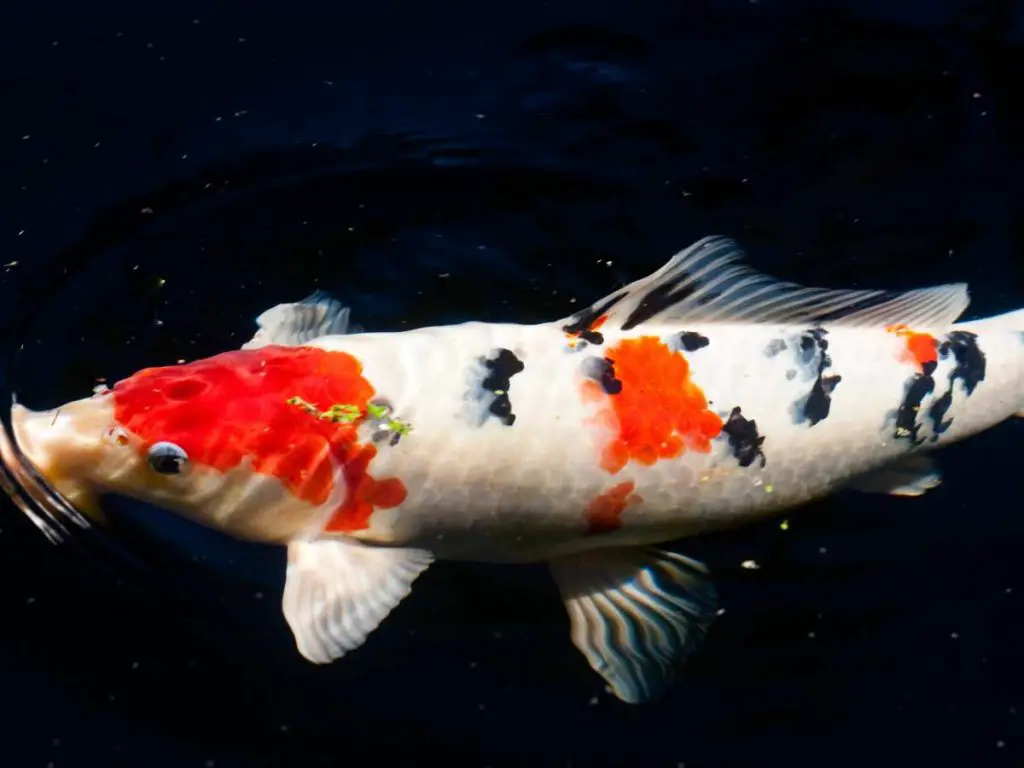
Different types of goromo koi
There are several variations of goromo koi, each with its own unique color pattern.
The most common types include the ai-goromo, which has a red pattern on a white background, and the budo-goromo, which features red and black patches on a white or light-colored base.
Goromo koi can also be classified based on the specific distribution and symmetry of their patterns.
For example, there is the kanoko-goromo, which has irregular spots and marbling, and the menkaburi-goromo, which has a solid, cap-like pattern on its head.
Table: Different Types of Goromo Koi
| Aspect | Description |
|---|---|
| Ai Goromo | Features blue reticulation on a red background. The blue patterns overlay the red scales, giving the appearance of a net-like pattern. |
| Sumi Goromo | Has black reticulation on a red background. The black patterns are more pronounced and can sometimes give a stronger contrast against the red. |
| Budo Goromo | Characterized by grape-like clusters over a red background. The patterns can resemble bunches of grapes, giving this variety its name (Budo means “grape” in Japanese). |
Distinctive features and patterns
One of the most striking features of goromo koi is the sharp, defined edges on their pattern markings. This gives them a sense of elegance and precision that sets them apart from other koi varieties.
Goromo koi can display a range of patterns, including hajiro (white edging on the scales), sumi (black markings), and beni (red markings). These patterns can combine and interact in various ways, creating a mesmerizing visual display.
Additionally, the intensity and balance of colors can greatly impact the overall appearance of the fish. A well-balanced goromo koi will have vibrant colors that complement each other harmoniously, creating a truly captivating sight.
Care requirements for goromo koi
When it comes to keeping goromo koi, maintaining the right water parameters is key to their overall health and well-being. These beautiful fish thrive in specific temperature, pH, and ammonia levels. Ideally, the water temperature should be between 65°F (18°C) and 75°F (24°C). As for pH, it should be maintained between 7.0 and 8.0. Ammonia levels should be kept at a minimum, as any significant increase can be harmful to your fish.
One of the most important aspects of water quality is filtration and water circulation. A powerful filtration system is essential to remove any waste and toxins from the water. It helps maintain optimal water conditions and promotes the overall health of your goromo koi.
Additionally, proper water circulation ensures that oxygen is well-distributed throughout the pond or tank, which is crucial for the well-being of your fish.
Pond or tank setup
The size and environment of the pond or tank play a crucial role in the health and happiness of your goromo koi. Your pond or tank should be of adequate size to allow the fish to swim and explore freely. As a general rule of thumb, you should provide at least 250 gallons of water for each goromo koi you intend to keep.
In terms of the environment, consider adding beneficial plants to your pond or tank. These plants provide shade, oxygenate the water, and create a natural habitat for your goromo koi. Hiding spots, such as rocks or caves, are also important as they give your fish a sense of security and help reduce stress.
Feeding and nutrition
Proper and balanced nutrition is essential for the overall health and vibrant colors of your goromo koi. These fish are omnivorous, which means they will eat both plants and small organisms. A suitable diet for goromo koi consists of high-quality koi pellets or flakes, as well as fresh vegetables and fruits.
When it comes to feeding frequency, it is best to divide their daily ration into two or three smaller meals. This helps prevent overfeeding, which can lead to health issues. Remember to remove any uneaten food from the pond or tank after 5 minutes to maintain good water quality.
There are several excellent commercial koi foods available in the market specifically designed to meet the nutritional needs of goromo koi. Look for reputable brands that offer a balanced mix of proteins, vitamins, and minerals. Reading the labels and choosing foods that list high-quality ingredients will ensure your fish receive the best nutrition.
While commercial koi food is sufficient, you can also add additional supplements and treats to their diet. These supplements can enhance their immune system and promote vibrant colors. Treats, such as freeze-dried shrimp or bloodworms, can be given occasionally as a special reward for your goromo koi.
Goromo koi behavior and attributes
Goromo koi are known for their vibrant colors and stunning patterns, but they also possess unique behavior and attributes that make them a fascinating addition to any pond or tank. Let’s explore some of these traits
Social behavior and compatibility with other fish
Goromo koi are generally peaceful and sociable fish, making them a great choice for community ponds. They tend to get along well with other koi varieties and can coexist harmoniously.
However, it’s essential to introduce new fish gradually and monitor their interactions to ensure everyone gets along. Some individual fish may exhibit more territorial behavior, so keep an eye out for any signs of aggression.
Swimming habits and activity levels
When it comes to swimming, goromo koi are quite active and love exploring their environment. You’ll often find them gracefully gliding through the water, showing off their stunning colors with every movement.
They are not overly timid or skittish, which makes them a joy to watch.
Note that these fish can be highly energetic, especially during feeding times when they eagerly swim to the surface to grab their share of the food. So, be prepared for their lively nature and provide plenty of space for them to swim freely.
Lifespan and growth potential
Goromo koi have an impressive longevity and can live for several decades if properly cared for. With the right conditions and a balanced diet, these fish can reach their full growth potential.
On average, goromo koi can grow up to 24 inches in length, although some individuals have been known to exceed this size. Their growth rate may vary depending on factors such as genetics, diet, and environmental conditions.
Remember to provide adequate space and proper nutrition to support their growth and maximize their lifespan.
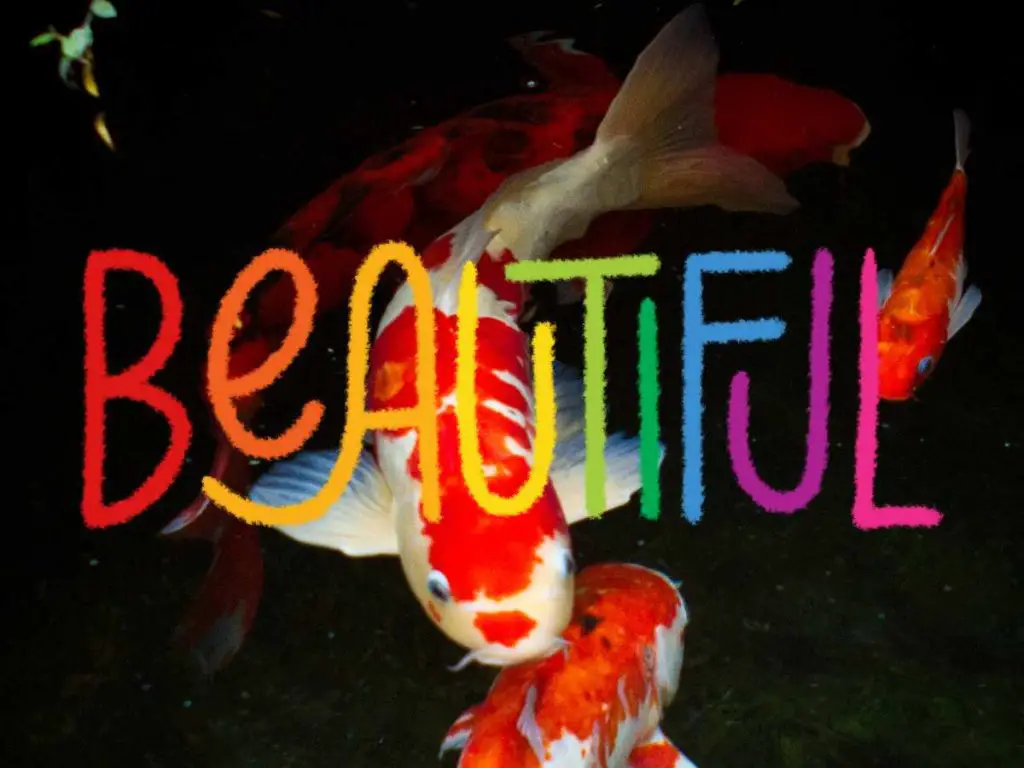
Potential health issues and disease prevention
When it comes to keeping goromo koi healthy (as well as other koi like agasi and ghost koi), it’s important to be aware of common diseases that can affect them. Some of the most common diseases include fungal infections, parasites, and bacterial infections. These can cause a range of symptoms, including visible lesions, behavioral changes, and loss of appetite.
Early detection is crucial in treating these diseases effectively. Keep a close eye on your koi for any signs of abnormal behavior or physical changes. Look out for things like flashing (scratching against objects), excessive mucus production, or frayed fins. These could indicate the presence of parasites or bacteria.
| Disease | Symptoms | Treatment |
|---|---|---|
| Fungal Infections | White or fuzzy growth on the skin | Treat with antifungal medications and improve water quality |
| Parasites | Flashing, excessive mucus production, or frayed fins | Treat with anti-parasitic medications and improve water quality |
| Bacterial Infections | Red sores, swelling, or ulcers | Treat with antibacterial medications and improve water quality |
Preventive measures and maintaining good fish health
The key to preventing diseases in goromo koi is maintaining good water quality. Regularly test the water parameters, including pH, ammonia levels, and temperature, and make adjustments as needed. Ensure proper filtration and water circulation to keep the water clean and oxygenated.
It’s also important to quarantine any new fish before introducing them to your existing koi population. This helps prevent the spread of diseases and allows you to closely monitor the health of the new fish. Keep them separate for at least a few weeks and observe them for any signs of illness.
In addition to these measures, a balanced and nutritious diet is essential for maintaining fish health. Feed your goromo koi a high-quality commercial koi food that meets their nutritional needs (or make your own koi food at home!).
You can also supplement their diet with treats like freeze-dried krill or bloodworms for added variety and nutrition.
Breeding goromo koi
When it comes to breeding goromo koi, nature does most of the work for you. These amazing fish have an innate ability to reproduce in the right conditions.
The first step in natural breeding is to ensure you have the right environment and timing. Goromo koi typically spawn during the spring when water temperatures reach around 68 to 70 degrees Fahrenheit.
During this time, create a suitable spawning area by including spawning brushes or mops. These artificial materials mimic the natural vegetation that koi would typically lay their eggs on. Make sure these brushes are easily accessible for the koi to deposit their eggs and can be easily removed for nurturing the fry later.
Artificial breeding techniques
If you want to take a more proactive approach to breeding goromo koi, you can try artificial breeding techniques. This method allows you to have more control over the breeding process and maximize successful hatches.
One common technique is called “stripping” the eggs. This involves gently squeezing the female koi’s abdomen to manually release the eggs while the male koi simultaneously releases sperm. The fertilized eggs are then collected and placed into a separate tank for incubation. This method requires some practice and accuracy to ensure successful fertilization.
Another artificial breeding technique is called “hand-spawning.” In this method, a net is used to gently massage the eggs out of the female and then collecting the milt from the male to add to the eggs. This allows for more controlled fertilization and can help increase the survival rate of the fry.
Caring for eggs and fry: 5 Steps
- Once you have collected the eggs, it is essential to provide them with optimal conditions for development. Transfer the eggs to a separate tank or a special incubation unit specifically designed for breeding koi.
- The water in the incubation tank should be kept at a consistent temperature between 68 to 70 degrees Fahrenheit. Use a thermometer to monitor and adjust the temperature as needed.
- It is crucial to maintain the water quality by monitoring ammonia, nitrite, and nitrate levels. Regular water changes and the use of a reliable filtration system are necessary to keep the water clean and ensure healthy development of the eggs.
- The eggs will hatch into fry after a few days, and it is crucial to provide them with suitable nutrition. Start feeding them with live and powdered food designed for fry. Gradually introduce them to small pellets as they grow.
- Take extra care in ensuring the fry have a continuous supply of clean, well-oxygenated water. Use gentle water circulation to prevent stagnant areas and add beneficial bacteria to promote a healthy environment.
Tips for selecting and purchasing goromo koi
When it comes to selecting and purchasing goromo koi, there are a few key factors to consider to ensure you bring home a healthy and high-quality fish. Let’s dive into some useful tips to help you make the best choice for your pond or tank.
Pricing and Valuation of Goromo Koi
The value of a Goromo Koi is determined by several factors. Firstly, the clarity and definition of its patterns play a significant role. A well-defined, symmetrical pattern is highly sought after. The lineage or bloodline of the koi can also influence its price, with koi from renowned breeders fetching higher prices. Size and overall health are other determining factors. It’s not uncommon for high-quality, mature Goromo Koi with exceptional patterns and lineage to command premium prices in the market. However, for enthusiasts looking to start with younger, smaller fish, there are more affordable options available.
Choosing healthy and high-quality goromo koi
First and foremost, physical characteristics can tell you a lot about the overall health of a goromo koi. Look for vibrant colors that are evenly distributed, with no signs of fading or blotchiness. The scales should be smooth and shiny, not dull or damaged. Additionally, check the fish’s fins for any tears or fraying, as this could indicate poor health or stress.
Another important aspect to consider is the fish’s behavior and activity level. A healthy goromo koi will be active and alert, swimming gracefully and exploring its environment. Avoid purchasing fish that appear lethargic, with clamped fins or unusual swimming patterns, as this could indicate underlying health issues.
Recommended sources and reputable koi sellers
When it comes to purchasing goromo koi, it’s important to find a trustworthy source or koi seller. One option is to reach out to local breeders and dealers in your area. They often have a wealth of knowledge and can provide guidance on selecting the right fish for your specific needs. Visiting their facilities also allows you to inspect the fish in person and assess their overall condition.
If local options are limited, another avenue to explore is online koi marketplaces. These platforms allow you to browse a wide range of goromo koi from different sellers, providing you with more options and potential for finding a high-quality fish. However, it’s crucial to thoroughly research and vet these sellers before making a purchase. Look for reputable sellers with positive reviews and a strong track record of delivering healthy fish, and who follow sustainable and ethical breeding practices.
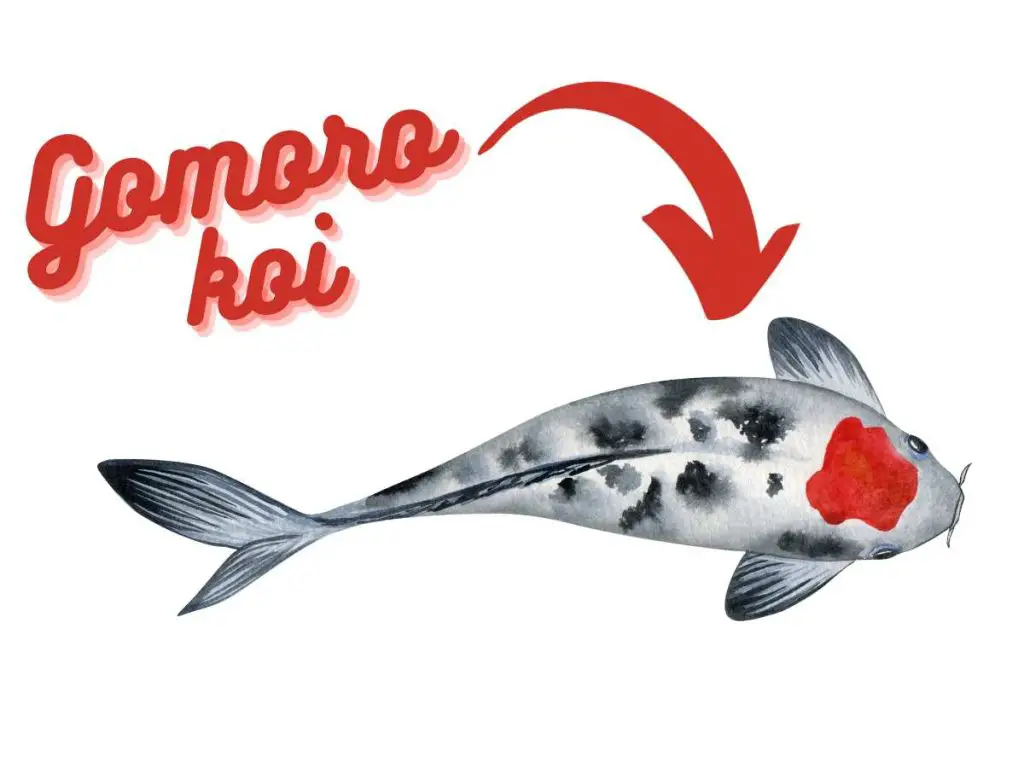
Conclusion
So, now you know all there is to know about goromo koi! These beautiful fish have a unique pattern that sets them apart from other koi varieties. They originated in Japan and come in different types, each with its own distinctive features. Goromo koi require specific care requirements to thrive, including maintaining optimal water parameters, providing a suitable pond or tank setup, and ensuring they are fed a nutritious diet. It’s important to be aware of potential health issues and take preventive measures to keep your goromo koi in good health. If you’re interested in breeding these fascinating fish, you can choose between natural or artificial breeding techniques. When it comes to selecting and purchasing goromo koi, it’s essential to choose healthy and high-quality fish from reputable sources.
Now that you’re equipped with this knowledge, you can confidently care for goromo koi and enjoy the rewarding experience of having these stunning fish in your pond or tank. Happy koi keeping!
Related Questions
Can I keep goromo koi with other types of koi in the same pond?
Absolutely! Goromo koi are generally peaceful and can coexist with other types of koi (like ghost and shusui koi) without any issues. Just make sure you have enough space in your pond and provide adequate hiding spots to prevent any territorial conflicts.
Where can I find reputable sellers for goromo koi?
There are various options for finding reputable sellers of goromo koi. You can start by checking with local koi breeders and dealers in your area. Online platforms like specialized koi marketplaces can also be a great way to connect with reliable sellers and browse a wide selection of goromo koi for sale.

